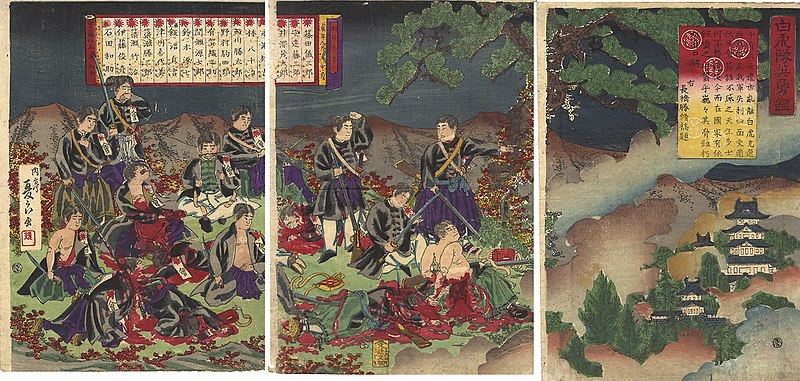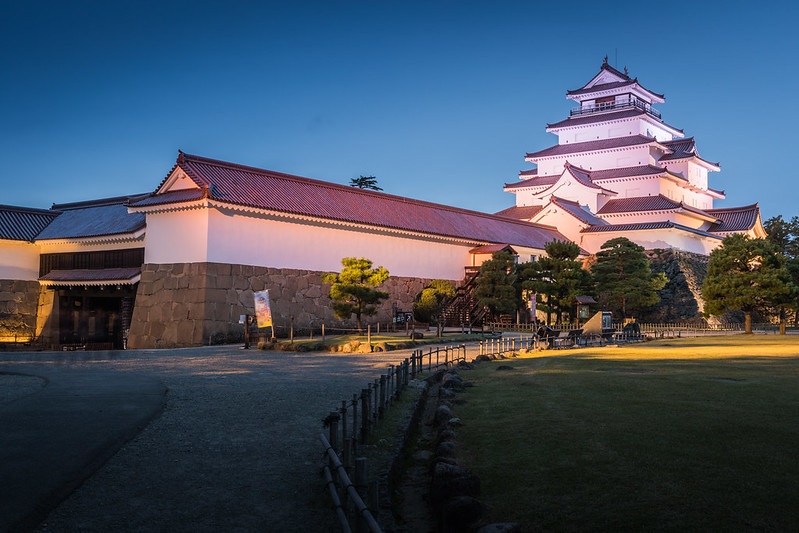
The Tragedy of the Byakkotai Samurai
Today, Aizu is the westernmost region of Fukushima Prefecture in Japan. The Aizu clan fought in the Boshin War, a civil war in Japan from 1868 to 1869 between the Tokugawa Shogunate forces and those opposed to their rule. The war finally ended the military regime of the Tokugawa Shogunate and returned political power to the imperial court.
Matsudaira Katamori, the ninth-generation lord of Aizu, deployed massive numbers of troops to Kyoto where he served as Kyoto Shugoshoku, a military commissioner who held the bureaucratic office of the Tokugawa shogunate responsible for keeping the peace. They also acted as first official supervisor and patron of the Shinsengumi, a special police force organized by the Bakufu (military government) during the Bakumatsu period in 1864. The Aizu clan’s stand during the war alienated its ally, the Satsuma Domain, and gained the spite of the Chōshū Domain, which was anti-Tokugawa.
Tsuruga Castle
The Aizu people were known for their martial arts skills and their house code to serve the shogun with single-minded devotion. The Byakkotai (白虎隊), “White Tiger Force,” was a group of over 300 teenage samurai of the Aizu domain. They were part of the four-unit military of Aizu in their drive in modernizing their military setup; the other three units were Genbutai, Suzakutai, and Seiryūtai. All four were named for the protecting gods of compass directions.
Byakkotai warrior
The Byakkotai were sons of Aizu samurai—teenage boys 16 or 17 years old. They were further subdivided by rank in the domain’s samurai population with two squads from the shichū or upper rank, two from the yoriai or middle rank, and two from the ashigaru or lowest rank. Even after attempts to modernize their military defenses, the Aizu people were still no match for the pro-imperial forces in numbers and weaponry.
Byakkotai who committed Seppuku at Iimori Hill, Woodblock print (nishiki-e).
In late 1868, most of the Aizu troops fought as part of the Ōuetsu Reppan Dōmei, the Northern Alliance to the south and northwest of the domain. Only about 3,000 troops were left to defend the castle and the town, including the Byakkotai who were only meant to be a reserve unit since they were made up of very young, inexperienced boys.
Walkway to the Byakkotai gravesite
In October, the Aizu were abandoned by the other northern domain as the pro-Imperial forces laid siege to Tsuruga Castle. At the height of the battle, 20 members of the 2nd shichū squad were cut off from the rest of their unit. The young boys retreated to Iimori Hill which overlooked the castle town. When the boys got a vantage point, they saw what they thought was the castle on fire. Believing their lord and families to be dead, they committed seppuku. One of the boys, Iinuma Sadakichi, survived the suicide attempt when he was found and saved by a samurai’s wife. Iinuma Sadakichi was only 14 years old and had lied about his age when he enlisted. It is through him and his accounts that the story of the young, brave, and honorable Byakkotai lives on.
